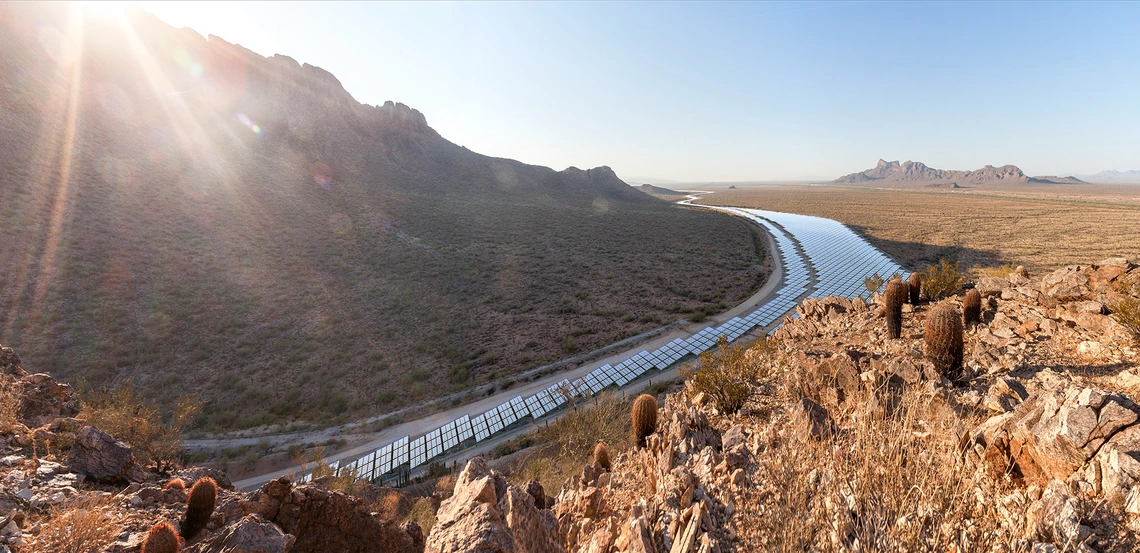
Photo: Computer rendering CAP canal around the Picacho Peak lift station
Benjamin Lepley
When
Speaker(s)
Moving water is the largest energy user in Arizona and thermo-electric power is the largest user of water according to the USGS. Arizona’s energy is still dominated by thermo-electric power at 83% with renewables at 17%, thus Arizona energy’s consumptive water footprint is massive. In 2015, Tectonicus started researching the feasibility of deploying canal-solar systems in the US. Reports published in 2014 and 2016 by the US Bureau of Reclamation cited the challenges to this idea such as canal access, security, structure cost, constructability, and operations and maintenance. Taking these hurdles as design challenges in 2015, Tectonicus started researching ways to solve these issues. This WRRC Water Webinar will provide information about how Tectonicus has built a controlled environment to test evaporation, algae growth, PV performance, and measure the micro-climate effects on the water and air, and cover the implications of the research. The tested effects, measured through instrumentation, are then mathematically modeled and applied to a larger system-scaled analysis of central Arizona canals for techno-economic impact analysis. The analysis compares the economics of existing utility-scale solar systems with canal-solar projects of the same size. The lab analysis will continue through to 2024; however, the preliminary results show canal-solar has a greater net present value than utility scale solar with water quality being the biggest benefit. Tectonicus is working with George Cairo Engineers on several full-scale projects throughout the state including on the Gila River Indian Community canals.

Ben Lepley is a Tucson-born architect who specializes in adaptive reuse. He has worked with firms in Mumbai and Beijing and taught architecture at UArizona’s CAPLA from 2015–2019. As a critique of architecture’s approach to solving climate change one building at a time, Lepley wanted to make larger system-wide design changes. In 2015, after reading an article about India’s first canal-solar, he began researching the feasibility of US systems. In 2019, Lepley’s firm, Tectonicus, received US Department of Energy (DoE) funding to build and test the performance of a prototype and is working with UArizona’s WEST center, UC-Merced, and DoE’s PNNL.

David DeJong has been director of the Pima-Maricopa Irrigation Project (P-MIP) since 2006. He holds graduate degrees in American Indian Law and Policy (water rights) from UArizona. As director of P-MIP, DeJong oversees the planning, designing, and construction of the Gila River Indian Community’s (GRIC) irrigation system, including a planned solar-over-canal project that will make the Community the first carbon-neutral irrigation district in the world. His academic work focuses primarily on GRIC’s water rights and agricultural history. DeJong has authored nine books, as well as multiple chapters/articles in scholarly books and journals.

